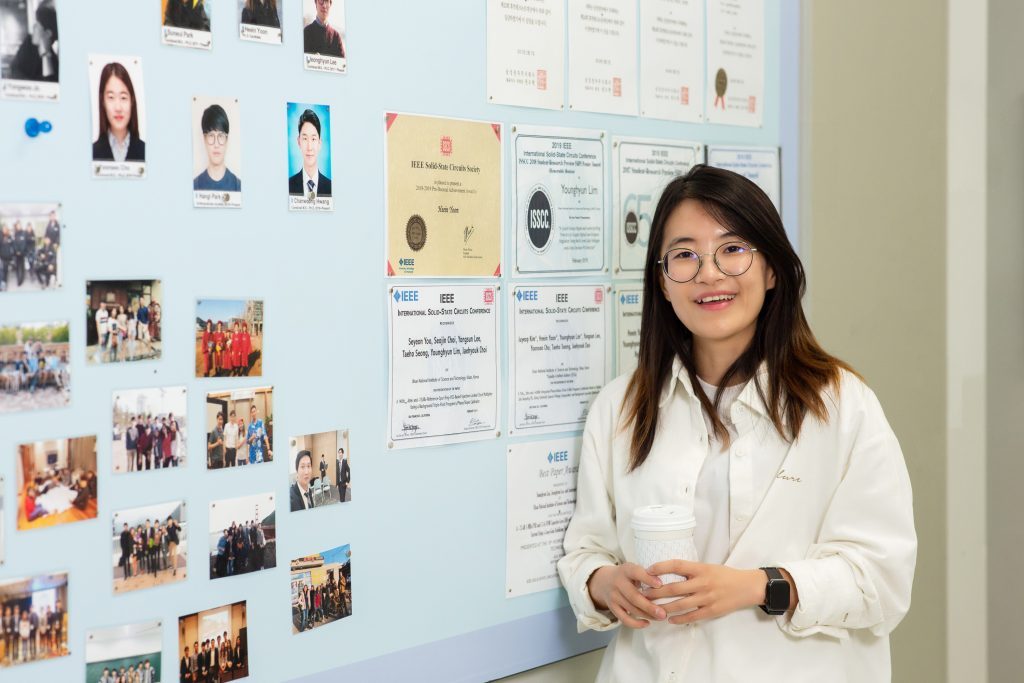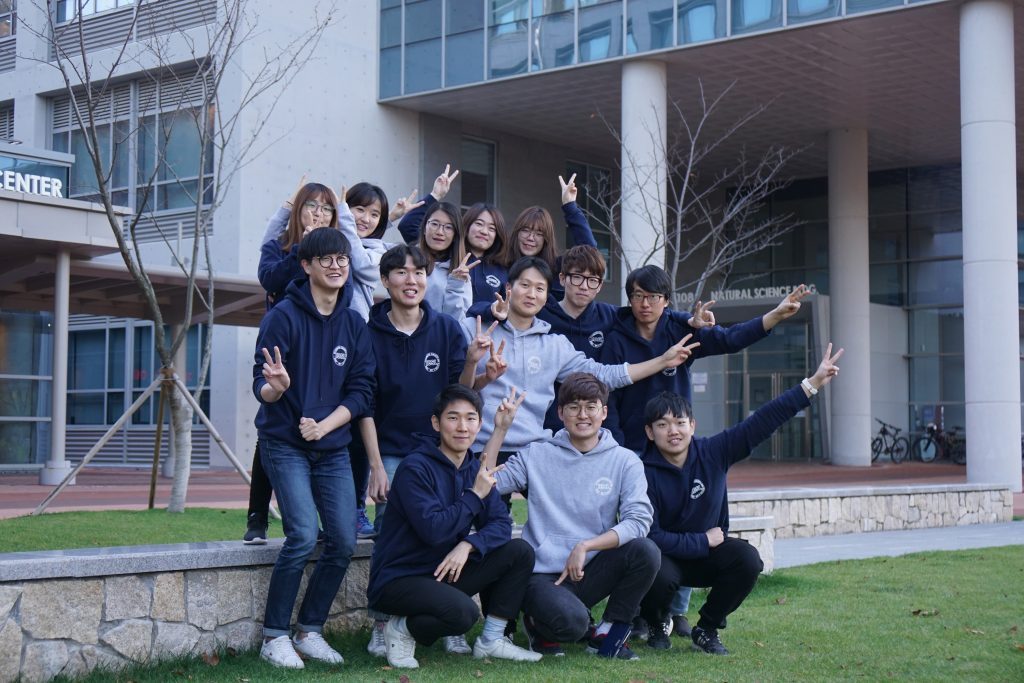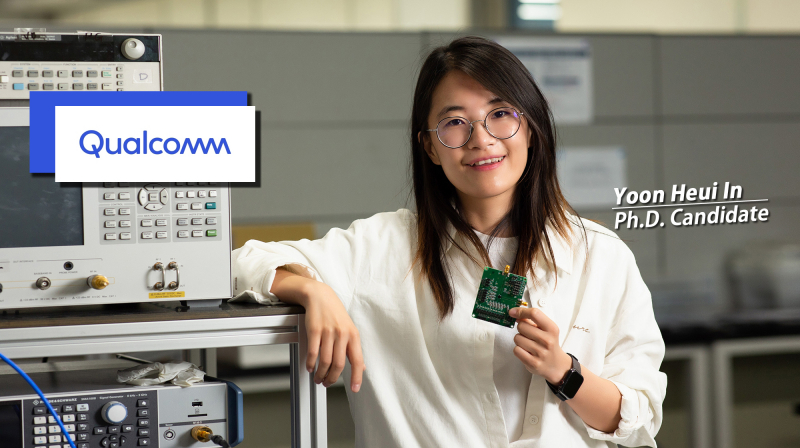I am thrilled to begin the next chapter of my career with Qualcomm Inc., a world leader in mobile communications chips. I am sure that once I join here, I will grow myself in my career as well as contribute to the organization’s overall growth as well.
Heui In Yoon, who is a doctoral candidate within the School of Electrical and Computer Engineering at UNIST, is about to begin her new career as an expert in semiconductor integrated circuits layout design at Qualcomm, starting at the end of May 2019.
Ms. Yoon will receive her Ph.D. degree in the month of August, this year. Qualcomm has offered Ms. Yoon a job last February but waited until she finished her degree at UNIST. She is scheduled to leave the country at the end of May, after her thesis defense on May 7, 2019.
“This is a rare case for Qualcomm to offer a job to students before they finish their doctoral degrees,” says her supervisor, Professor Jaehyouk Choi (School of Electrical and Computer Engineering, UNIST).”This is largely due to her outstanding performance and education at UNIST, as well as her experience while she was working as an intern at Qualcomm, last year.”
Ms. Yoon entered UNIST, as an undergraduate student in March 2011 and has been actively carrying out research on semiconductor circuit designs under the supervision of Professor Choi, since May 2012. Her eight-year professional career as a semiconductor circuit designer has been full of awards, including several international awards and successful internships. She has been studying the “Frequency Synthesizer”, a circuit that is needed to send and receive signals on a communications chip. A frequency synthesizer is a semiconductor circuit that generates and analyzes frequencies used by communication terminals such as smartphones to send and receive signals.
It is the job of a semiconductor designer to draw circuitry on a chip that is smaller than a fingernail to drive electronic devices. In the photo, the semiconductor chip is located in the middle of where the golden lines are merged.
“In a 5G communication environment, a new type of frequency synthesizer is required,” says Ms. Yoon. “Qualcomm is in the process of designing semiconductor circuits for more effective 5G communication, and after joining the company, I plan on helping researchers in the frequency synthesizer field.”
Ms. Yoon’s internship at Qualcomm in August 2017 played an important role in getting her dream job at Qualcomm. She also excelled in her studies by being selected as the ‘Global Ph.D. Fellowship (GDF)’ in 2016′ and receiving the ‘Student Research Preview (SRP) Award’ at the annual IEEE International Solid-State Circuit Conference (ISSCC) in 2018.
“At Qualcomm, I participated in a communication chip project, which aimed at launching in 2020 and I have enjoyed and learned a lot,” says Ms. Yoon. “Most of the engineers there were male, but the general manager who was a Chinese woman caught my eyes and motivated me to be a talented researcher, like her.”

Heein Yoon, posing for a portrait in front of her lab at UNIST.
After returning to UNIST to complete her doctoral degree, she was granted the ‘2019 Predoctoral Achievement Award’ by the IEEE Solid-State Circuits Society (SSCS), earlier this year. This prestigious award is made to a small number of promising graduate students on the basis of academic record and promise, quality of publications, and a graduate study program well matched to the charter of SSCS.
“I feel very fortunate to have Professor Choi as a supervisor and pursue an academic career at UNIST, a young and passionate university, and have majored in semiconductor circuits,” says Ms. Yoon. “I have no words to express my gratitude to Professor Choi who taught me about being a better semiconductor designer, as well as my colleagues who were willing to work with me whenever I wanted to quit.”

Ms. Yoon and her colleagues at UNIST. l Image Credit: Heui In Yoon
The field of semiconductor circuit design is closely connected with the wireless industry. Therefore, it is also possible to directly observe how the products that have been processed in the laboratory are made directly from the industry. Ms. Yoon cited this as an attraction for semiconductor circuit design.
Founded in 1985, Qualcomm Inc. is an American multinational semiconductor and telecommunications equipment company that designs and markets wireless telecommunications products and services. The company is well known for GSM, which uses the 2G technology, one of the first concepts that were introduced and still remains as the most widely used network in the world with about five billion connections worldwide. It also boasts several core technology patents for 3G communications, including Code Division Multiple Access (CDMA), a Qualcomm-owned technology found in the majority of the 3G networks worldwide. As the first mobile application processor (AP), the company is currently bidding with the market with Samsung Electronics Inc.























